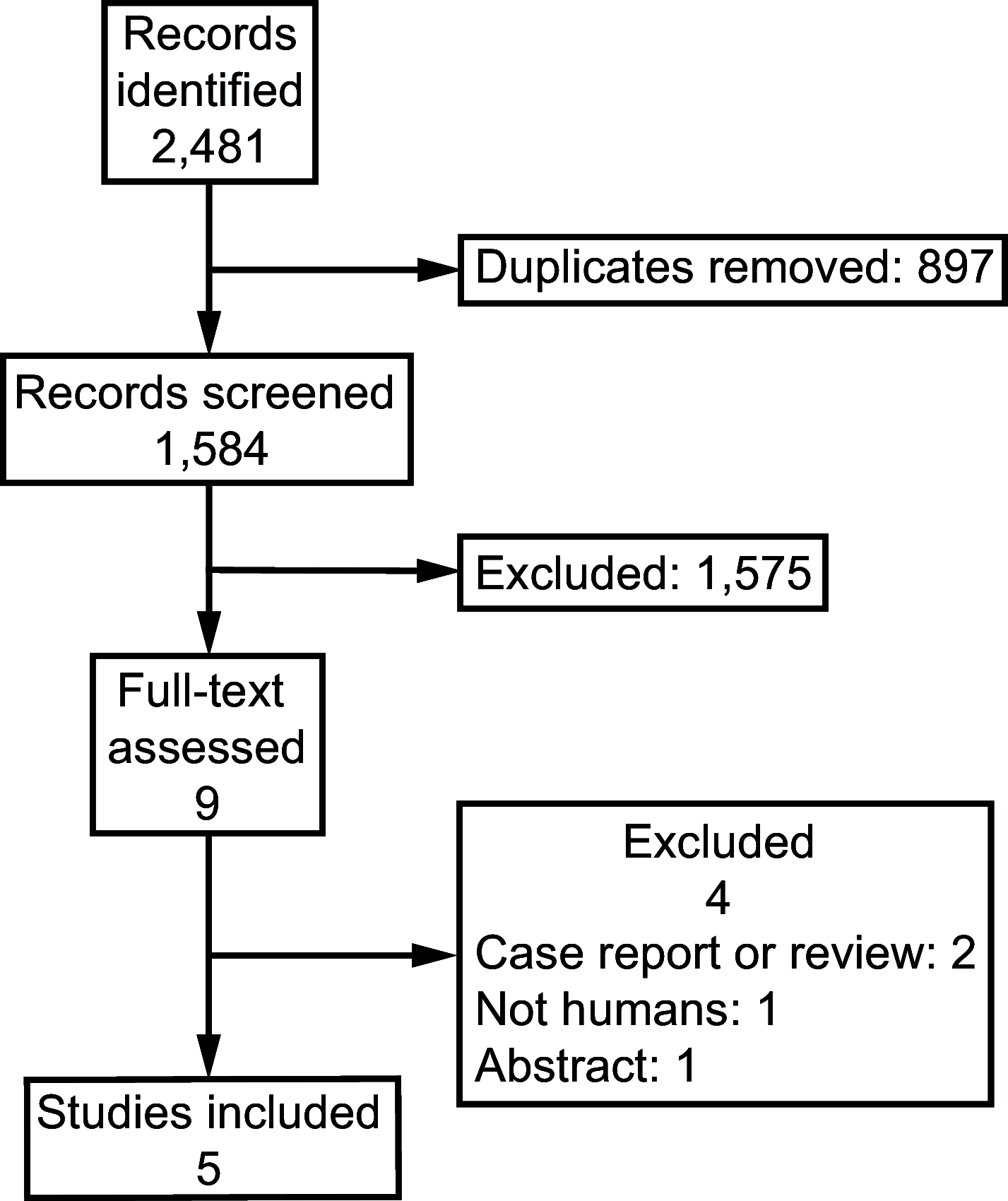Physiological Effects of High-Flow Tracheal Oxygen in Tracheostomized Patients Weaning From Mechanical Ventilation
- PMID: 38772682
- PMCID: PMC11469007
- DOI: 10.4187/respcare.11755
Physiological Effects of High-Flow Tracheal Oxygen in Tracheostomized Patients Weaning From Mechanical Ventilation
Abstract
Background: High-flow tracheal oxygen (HFTO) is being used as supportive therapy during weaning in tracheostomized patients difficult to wean from invasive mechanical ventilation. There is, however, no clinical evidence for such a strategy. Therefore, we conducted a systematic review to summarize studies evaluating the physiologic effects of HFTO during tracheostomy-facilitated weaning and to identify potential areas for future research in this field.
Methods: Observational and interventional studies on critically ill subjects weaning from mechanical ventilation via tracheostomy published until December 22, 2022, were eligible. Studies on high-flow oxygen, only in children, non-human models or animals, on clinical outcome only, abstracts without full-text availability, case reports, and reviews were excluded. Main outcomes were end-expiratory lung volume (EELV) and tidal volume using electrical impedance tomography, respiratory effort assessed by esophageal manometry, work of breathing and neuroventilatory drive as assessed by electrical activity of the diaphragm (EAdi) signal, airway pressure (Paw), oxygenation (PaO2 /FIO2 or SpO2 /FIO2 ), breathing frequency, tidal volume, and PaCO2 .
Results: In total, 1,327 references were identified, of which 5 were included. In all studies, HFTO was administered with flow 50 L/min and compared to conventional O2 therapy in a crossover design. The total average duration of invasive ventilation at time of measurements ranged from 11-27 d. In two studies, PaO2 /FIO2 and mean Paw were higher with HFTO. EELV, tidal volumes, esophageal pressure swings, and EAdi were similar during high-flow tracheal oxygen and conventional O2 therapy.
Conclusions: The main physiological effect of HFTO as compared to conventional O2 therapy in tracheostomized subjects weaning from mechanical ventilation was improved oxygenation that is probably flow-dependent. Respiratory effort, lung aeration, neuroventilatory drive, and ventilation were similar for HFTO and conventional O2 therapy. Future studies on HFTO should be performed early in the weaning process and should evaluate its effect on sputum clearance and patient-centered outcomes like dyspnea.
Keywords: artificial respiration; critical care; crossover study; respiratory physiological phenomena; respiratory therapy; tracheostomy; ventilator weaning.
Copyright © 2024 by Daedalus Enterprises.
Conflict of interest statement
Dr Weller discloses a relationship with Avanos Medical. Dr Endeman discloses relationships with ZonMw, Fisher & Paykel Healthcare, La Roche, Ventinova Medical, and Getinge. Dr Heunks discloses relationships with Getinge, Liberate Medical, ZonMw, European Respiratory Society, and American Thoracic Society. The remaining authors have disclosed no conflicts of interest.
References
-
- Zilberberg MD, Luippold RS, Sulsky S, Shorr AF. Prolonged acute mechanical ventilation, hospital resource utilization, and mortality in the United States. Crit Care Med 2008;36(3):724-730. - PubMed
-
- Cheung NH, Napolitano LM. Tracheostomy: epidemiology, indications, timing, technique, and outcomes. Respir Care 2014;59(6):895-915.discussion 916–899. - PubMed
-
- Boles JM, Bion J, Connors A, Herridge M, Marsh B, Melot C, et al. Weaning from mechanical ventilation. Eur Respir J 2007;29(5):1033-1056. - PubMed
Publication types
MeSH terms
Substances
LinkOut - more resources
Full Text Sources
Medical


